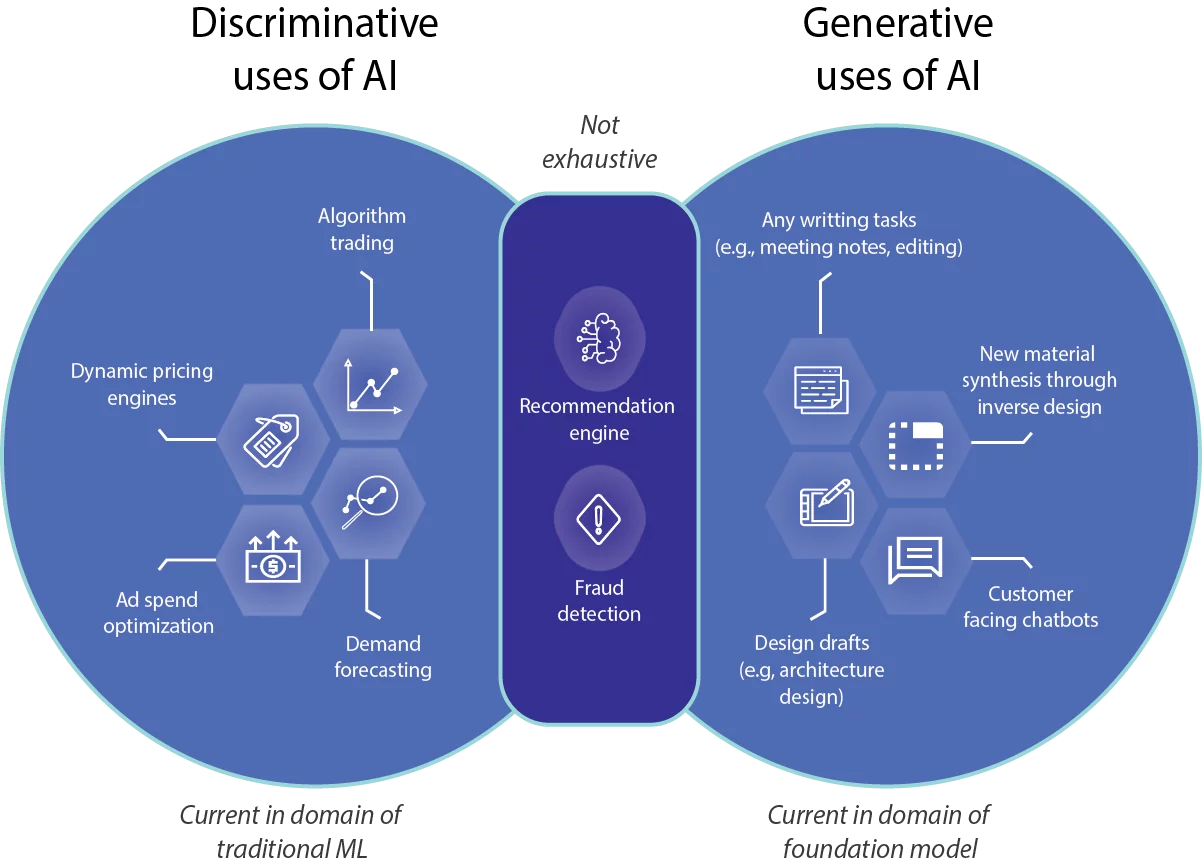All Categories
Featured
That's why so several are applying vibrant and intelligent conversational AI designs that consumers can connect with through message or speech. In addition to client service, AI chatbots can supplement marketing efforts and assistance internal interactions.
The majority of AI business that train big designs to produce text, pictures, video clip, and sound have not been transparent concerning the material of their training datasets. Numerous leakages and experiments have actually disclosed that those datasets include copyrighted material such as publications, paper articles, and movies. A number of lawsuits are underway to figure out whether usage of copyrighted product for training AI systems makes up fair use, or whether the AI firms require to pay the copyright holders for use their material. And there are certainly several categories of poor stuff it can theoretically be used for. Generative AI can be used for personalized rip-offs and phishing assaults: For instance, using "voice cloning," fraudsters can copy the voice of a specific person and call the person's family with an appeal for assistance (and money).

(Meanwhile, as IEEE Range reported today, the U.S. Federal Communications Commission has reacted by banning AI-generated robocalls.) Photo- and video-generating devices can be used to generate nonconsensual pornography, although the tools made by mainstream companies disallow such use. And chatbots can in theory walk a potential terrorist via the steps of making a bomb, nerve gas, and a host of various other horrors.
What's even more, "uncensored" versions of open-source LLMs are out there. Regardless of such potential issues, lots of people assume that generative AI can additionally make people much more efficient and can be used as a device to enable totally brand-new forms of creativity. We'll likely see both catastrophes and innovative flowerings and plenty else that we don't anticipate.
Find out much more about the mathematics of diffusion versions in this blog post.: VAEs include 2 neural networks usually referred to as the encoder and decoder. When offered an input, an encoder transforms it into a smaller sized, much more dense depiction of the information. This compressed depiction maintains the details that's required for a decoder to reconstruct the original input data, while discarding any type of unimportant details.
How Does Ai Create Art?
This enables the individual to conveniently sample brand-new hidden representations that can be mapped with the decoder to generate unique information. While VAEs can create outcomes such as images faster, the pictures produced by them are not as outlined as those of diffusion models.: Uncovered in 2014, GANs were thought about to be the most typically utilized technique of the three prior to the recent success of diffusion models.
The 2 models are educated with each other and obtain smarter as the generator produces much better content and the discriminator obtains better at finding the created web content. This procedure repeats, pressing both to constantly improve after every iteration till the produced content is identical from the existing material (How can businesses adopt AI?). While GANs can supply high-quality samples and produce outcomes rapidly, the sample variety is weak, for that reason making GANs better fit for domain-specific information generation
Among one of the most popular is the transformer network. It is vital to recognize exactly how it works in the context of generative AI. Transformer networks: Comparable to frequent neural networks, transformers are designed to refine sequential input information non-sequentially. Two mechanisms make transformers particularly skilled for text-based generative AI applications: self-attention and positional encodings.
Generative AI begins with a structure modela deep learning model that acts as the basis for multiple different types of generative AI applications - AI data processing. One of the most common structure models today are huge language models (LLMs), produced for text generation applications, yet there are likewise structure versions for image generation, video clip generation, and noise and songs generationas well as multimodal foundation designs that can support numerous kinds material generation
What Are Ai-powered Robots?
Discover more about the background of generative AI in education and terms connected with AI. Learn a lot more about how generative AI functions. Generative AI tools can: Reply to motivates and inquiries Create pictures or video Sum up and synthesize details Modify and modify web content Produce creative jobs like musical structures, stories, jokes, and rhymes Compose and deal with code Adjust information Produce and play video games Capacities can vary dramatically by tool, and paid versions of generative AI devices frequently have specialized functions.

Generative AI devices are frequently learning and advancing however, since the date of this publication, some constraints include: With some generative AI devices, continually integrating real study into message stays a weak capability. Some AI devices, for instance, can generate text with a referral checklist or superscripts with links to sources, yet the references frequently do not match to the text developed or are phony citations made from a mix of real magazine info from several resources.
ChatGPT 3 - What is reinforcement learning used for?.5 (the totally free version of ChatGPT) is educated utilizing information readily available up until January 2022. Generative AI can still make up possibly incorrect, oversimplified, unsophisticated, or biased feedbacks to inquiries or motivates.
This listing is not comprehensive yet includes some of the most extensively made use of generative AI devices. Tools with cost-free variations are shown with asterisks. (qualitative research AI assistant).
Latest Posts
What Are Ai-powered Robots?
Ai-driven Personalization
Ai Job Market